How to Find Water in Remote Areas

How to Locate Drinkable Water in the Wild
Knowing how to find water can be a critical survival skill in times of need. Whether lost in the wilderness, stranded in a remote area, or simply exploring nature, locating a reliable water source is essential for your health and well-being.
Water is a fundamental human need, and understanding how to find it in the wild can make the difference between life and death.
This guide will cover various techniques and tips for finding natural water during a water shortage, ensuring you stay hydrated and safe. We will explore natural indicators, practical methods, and essential tools that can assist in your quest for water.
Key Takeaways
- Understand Natural Indicators: Recognize animal behavior, specific plants, and geographical features that can guide you to water sources in various environments.
- Practical Water Collection Methods: Use techniques like digging in dry riverbeds, setting up a solar still, collecting rainwater, and collecting dew to find and gather water effectively.
- Purify Water for Safety: Always purify collected water by boiling it, using portable filters, chemical purification, or solar disinfection to ensure it is safe for consumption.
The Importance of Water in Survival Situations
Water is vital for maintaining bodily functions, including temperature regulation, digestion, and waste elimination. In survival situations, dehydration can set in quickly, leading to severe health issues or even death. Therefore, it is crucial to prioritize finding water before other survival needs.
Finding Water is a Top Three Survival Skill
In any survival situation, the three most critical priorities are finding a reliable water source, starting a fire, and building or finding a shelter. These essentials form the foundation of survival.
Finding a water source is crucial for hydration and maintaining bodily functions, as dehydration can occur quickly and is life-threatening. Access to clean water ensures you can stay healthy and energized.
Meanwhile, knowing how to start a fire is essential for warmth, cooking, and signaling for help. A fire can also purify water, making it safe to drink. Building a shelter provides immediate protection from the elements and wildlife, creating a safe space to rest and maintain body heat.
Mastering these three survival tips can significantly enhance your chances of enduring and overcoming challenging environments.
Quick Tips for Finding Water in Remote Locations
Finding water in remote locations can be challenging, but with the proper knowledge and techniques, you can increase your chances of staying hydrated. Here are ten quick tips to help you locate water sources in the wild.
- Follow animal tracks, especially those of larger mammals, which often lead to water sources.
- Look for lush, green vegetation as it usually indicates nearby water.
- Search for natural depressions and valleys where water might collect.
- Utilize morning dew by wiping it off leaves and grass with a cloth.
- Investigate dry riverbeds and dig a few feet down to find hidden water.
- Use plastic sheeting to create a solar still to collect water from soil and plants.
- Collect rainwater using any available containers or tarps.
- Listen to the sound of running water, especially in mountainous regions.
- Inspect rock crevices and fissures where water might be trapped.
- Learn to identify water-storing plants like cacti and other succulents in arid areas.
Understanding the Signs of Dehydration
Recognizing the early signs of dehydration is crucial in prompting immediate action, especially in a remote location where water might not be readily available.
Dehydration can quickly escalate from mild to severe, and awareness of the symptoms can help you gauge the urgency of finding water and taking necessary measures to rehydrate.
Here are the key signs to look out for:
- Dry Mouth: One of the first signs of dehydration is a dry or sticky mouth. This occurs because your body is not producing enough saliva due to insufficient fluids.
- Headache: Dehydration can cause headaches, which might start as mild discomfort and escalate to more severe pain as your condition worsens.
- Dizziness: Feeling lightheaded or dizzy is a common symptom of dehydration. This can affect balance and coordination, making it dangerous to navigate difficult terrain.
- Fatigue: Dehydration leads to a decrease in blood volume, causing your heart to work harder to pump blood, resulting in feelings of exhaustion and lethargy.
- Dark Urine: Urine color is a clear indicator of hydration levels. Dark yellow or amber-colored urine signifies that your body is conserving water, indicating dehydration.
- Dry Skin: Lack of adequate hydration can lead to dry and less elastic skin. Pinching the skin on the back of your hand can test this; if it doesn’t snap back quickly, you might be dehydrated.
- Rapid Heartbeat: Dehydration causes your heart to pump faster to maintain blood pressure. A noticeable increase in heart rate is a severe sign of dehydration.
- Confusion: Severe dehydration can impair cognitive function, leading to confusion, disorientation, and difficulty concentrating. This can be especially dangerous in survival situations where clear thinking is crucial.
- Low Blood Pressure: Dehydration can cause a drop in blood pressure, resulting in fainting or feeling faint, particularly when standing up quickly.
- Unconsciousness: In extreme cases, dehydration can lead to unconsciousness, representing a medical emergency that requires immediate intervention.
Knowing these signs can help you monitor your condition and understand the urgency of finding water. Addressing dehydration as soon as symptoms appear is essential to prevent it from becoming a life-threatening issue. Always carry sufficient water and have a plan for finding and purifying water sources when exploring remote locations.
Assessing Your Environment
Your environment will significantly influence your strategy for finding water. Different terrains offer various clues and opportunities for locating water sources. Here’s a look at some everyday environments and what to look for in each:
Forests and Woodlands
Forests, due to their dense vegetation, are often rich in water sources. Look for streams, rivers, and natural springs. Follow animal tracks, which often lead to water. Observe the presence of lush, green vegetation, which usually indicates nearby water.
Deserts
Finding water in deserts is challenging but not impossible. Seek areas where vegetation is present, as plants like cacti store water. Look for dried-up riverbeds, which might have underground water. Digging a few feet down in such areas can sometimes reveal moisture.
Mountains and Hills
Water tends to flow downhill in mountainous regions, accumulating in valleys and low-lying areas. Meltwater from snow and ice can also be a valuable resource. Listen to the sound of running water, which can guide you to streams and rivers.
Coastal Areas
Fresh water can sometimes be found near the coast by digging above the high tide mark. Rainwater catchments in rock crevices and depressions can also be potable water sources.
Natural Indicators of Water
Nature provides numerous indicators that can guide you to water sources. Learning to read these signs can significantly improve your chances of finding water.
Animal Behavior
Animals need water to survive, and their behavior can lead them to water sources. Birds often fly towards water at dawn and dusk. Insects, especially mosquitoes, are commonly found near water. Following animal tracks can also lead you to water.
Vegetation
Certain plants are strong indicators of water. For example, willows and cottonwoods often grow near water. Reeds, bulrushes, and cattails typically indicate shallow groundwater. Green, lush vegetation in otherwise dry areas can signal underground water.
Geographical Features
Topography can offer clues about water locations. Valleys, depressions, and low-lying areas are more likely to have water. Look for rock crevices and fissures where water might collect. Natural springs often emerge at the base of slopes and hills.
Did You Know?
Certain bird species, like honeyguides, can lead you to water sources. While they are known for guiding humans to honeybee hives, they often nest near water. Observing their flight patterns can inadvertently help you find water.
Practical Methods for Finding Water
In addition to natural indicators, several practical methods can help you locate water.
Digging for Water
Digging a few feet down in dry riverbeds can sometimes yield water. The sand or soil will be damp, and with patience, you can collect enough to sustain you. Ensure you purify any collected water before consumption.
Step-by-Step Guide to Digging for Water
- Find a Spot: Look for low areas or dry riverbeds.
- Gather Tools: Use a stick, rock, or any digging tool.
- Dig: Make a hole 1-2 feet deep.
- Check Moisture: Look for damp soil.
- Wait: Allow water to seep in.
- Purify: Filter and purify the collected water.
Solar Still
A solar still can be an effective way to extract water from soil or vegetation. Dig a hole, place a container in the center, and cover the hole with plastic. Place a small rock in the center of the plastic to create a low point. As the sun heats the soil, water vapor will condense on the plastic and drip into the container.
Step-by-Step Guide to Making and Using a Solar Still
- Find a Spot: Choose a sunny location with moist soil.
- Gather Tools: Collect plastic sheeting, a container, a small rock, and a digging tool.
- Dig: Create a hole about 3 feet wide and 2 feet deep.
- Place Container: Put a container in the center of the hole.
- Cover with Plastic: Lay plastic sheeting over the hole, securing the edges with rocks or soil.
- Add Weight: Place a small rock in the center of the plastic to create a dip above the container.
- Wait: Let the sun heat the soil. Water will evaporate, condense on the plastic, and drip into the container.
- Collect Water: Retrieve the container and purify the water if necessary.
Collecting Rainwater
Rainwater is one of the purest natural water sources. Use any available containers to collect rainwater. If you have plastic sheeting or tarps, create a funnel to direct rainwater into a container.
Step-by-Step Guide to Collecting Rainwater
- Find a Spot: Choose an open area where rain can freely fall.
- Gather Tools: Collect containers, tarps, or plastic sheets.
- Set Up Containers: Place containers in the open to catch rain directly.
- Create a Funnel: Use a tarp or plastic sheet to channel rainwater into a larger container.
- Secure Edges: Ensure tarps or plastic sheets are firmly anchored to prevent them from blowing away.
- Wait: Allow the rain to collect in your containers.
- Purify: Filter and purify the collected rainwater before drinking.
Dew Collection
Dew can be collected from grass and leaves in the early morning. Use a clean cloth to soak dew and wring it into a container. This method is labor-intensive but can provide a small amount of water.
Step-by-Step Guide to Dew Collection
- Find a Spot: Look for grassy or leafy areas with morning dew.
- Gather Tools: Use a clean cloth or sponge and a container.
- Collect Dew: Wipe the dew off leaves or grass with a cloth or sponge.
- Squeeze: Squeeze the collected dew into the container.
- Repeat: Continue until you have gathered a sufficient amount of water.
- Purify: Filter and purify the collected water if necessary.
Purifying Water
Once you find water, it is crucial to purify it to make it safe for consumption. Even clear, fresh-looking water can harbor harmful pathogens. Here are several methods to ensure your water is potable:
Boiling
Boiling water is one of the most effective ways to kill bacteria, viruses, and parasites. Bring water to a rolling boil for at least one minute (or three minutes at higher altitudes).
Filtration
Using a portable water filter can remove many impurities from water. These filters are designed to eliminate bacteria and protozoa; some can even remove viruses.
Chemical Purification
Water purification tablets or drops containing iodine or chlorine can disinfect water. Follow the manufacturer’s instructions carefully to ensure effectiveness.
Solar Disinfection (SODIS)
Solar disinfection involves filling clear plastic bottles with water and placing them in direct sunlight for six hours. UV rays from the sun can kill pathogens, making drinking water safer.
Everyday Tools for Finding Water
The right tools can significantly increase your chances of finding and purifying water. Here are some essential items to include in your survival kit:
- Water Filter: A portable water filter is lightweight and can quickly provide safe drinking water.
- Metal Container: A metal container can be used for boiling water, making it essential for purification.
- Plastic Sheeting: Plastic sheeting can construct a solar still or collect rainwater.
- Paracord: Paracord is versatile and can secure plastic sheeting or construct a shelter near a water source.
- Hydration Pack: A hydration pack allows you to carry and access water easily while on the move.
How to Find Water in Extreme Situations
Sometimes, traditional methods may not be feasible, and extreme measures are necessary. Here are some advanced techniques for finding water in dire situations:
Distillation
Distillation can be used to purify saltwater or contaminated water. Set up a distillation apparatus to collect evaporated water, leaving impurities behind.
Solar Desalination
Solar desalination devices use the sun’s heat to evaporate water, which condenses and is collected as fresh water. This method can be helpful in coastal areas.
Condensation Traps
Condensation traps can be set up in arid environments to collect moisture from the air. Use a tarp or plastic sheet to create a tent-like structure, with a container at the bottom to catch condensed water.
Ice and Snow
In cold environments, ice and snow can be melted for water. However, avoid consuming them directly, as they can lower your body temperature. Always melt and boil ice or snow before drinking.
How to Find Water in Different Climates
Different climates present unique challenges when it comes to finding water. Here’s how to adapt your strategies:
Tropical Climates
Rain is frequent in tropical regions. Use containers to collect rainwater and seek out rivers and streams. Be cautious of waterborne diseases and always purify water before drinking.
Arid Climates
In deserts, water is scarce. Look for signs of vegetation and dig in dry riverbeds. Utilize dew collection techniques and seek out underground water sources.
Cold Climates
In cold environments, melt snow and ice for water. Use body heat or a fire to speed up the melting process. Avoid eating ice or snow directly.
Temperate Climates
Temperate regions often have abundant water sources. Look for streams, rivers, and lakes. Follow natural indicators and use practical methods to find and purify water.
Staying Hydrated in Emergency Situations
Maintaining hydration is critical in emergencies. Here are some tips to manage your water consumption effectively:
Rationing Water
If your water supply is limited, ration it carefully and drink small amounts at regular intervals to maintain hydration levels.
Reducing Physical Activity
To reduce sweat and water loss, minimize physical exertion and rest in shaded areas during the hottest parts of the day.
Creating Shade
Construct a makeshift shelter to protect yourself from the sun. This will help conserve energy and reduce water loss through sweating.
Monitoring Urine Color
Keep an eye on the color of your urine. Dark yellow indicates dehydration, while light yellow or clear urine indicates adequate hydration.
Tips for Staying Safe While Finding Water
While finding water is crucial, safety should not be overlooked. Here are some safety tips to keep in mind:
Avoid Contaminated Water
Stay away from water sources that appear stagnant, murky, or have an unusual odor. These can harbor harmful pathogens and chemicals.
Test Water Quality
If in doubt, test the water quality using portable testing kits. These kits can detect harmful bacteria and chemical contaminants.
Stay Alert
Be mindful of your surroundings while searching for water. Wildlife and environmental hazards can pose risks. Always stay vigilant and aware.
Plan Ahead
Whenever possible, plan your route and identify potential water sources ahead of time. Carry sufficient water and purification tools for your journey.
FAQs About Locating Water in The Wild
What are the best natural indicators of water in the wild?
Animals and insects, certain plants, and geographical features are excellent natural indicators of water. For instance, birds often fly toward water at dawn and dusk, and lush vegetation usually signals nearby water.
How can I purify water in a survival situation?
Boiling, using water filters, chemical purification, and solar disinfection are effective methods for purifying water in a survival situation.
Is it safe to drink water from streams and rivers?
While streams and rivers can be good water sources, they can also be contaminated. Always purify water from these sources before drinking.
What tools should I include in my survival kit for finding water?
Essential tools include a portable water filter, a metal container for boiling water, plastic sheeting for rainwater collection, and a paracord.
How do I find water in a desert?
Look for vegetation and dry riverbeds, and use dew collection techniques. Digging in dry riverbeds can sometimes reveal underground water.
What should I do if I can't find water?
Conserve your current water supply, reduce physical activity, create shade to reduce water loss through sweating, and monitor your urine color for signs of dehydration.
Conclusion: Essential Survival Tips for Finding Water
Finding water is a fundamental survival skill that requires knowledge, awareness, and preparation. In any survival situation, locating a reliable water source is paramount to maintaining health and well-being. Understanding natural indicators such as animal behavior, specific plant types, and geographical features can provide crucial clues to water sources. Utilizing practical methods like digging for water, creating solar stills, and collecting dew can be lifesaving techniques when conventional sources are unavailable.
Having the right tools in your survival kit, such as portable water filters, metal containers, plastic sheeting, paracord, and hydration packs, can significantly increase your chances of finding and purifying water. These tools aid in water collection and ensure that the water you consume is safe from harmful pathogens and contaminants.
Purification should always be a priority; even seemingly clear water can harbor dangerous microorganisms. Methods such as boiling, filtering, and chemical purification are essential to making water potable. By staying vigilant and prepared, you can mitigate the risks associated with dehydration and contaminated water.
Stay hydrated, stay safe, and always be prepared for the unexpected. With the proper knowledge and tools, you can confidently navigate the challenges of finding water in the wild, ensuring your survival and well-being.
Historical Uncommon Facts About Finding Water
This list shows different ways ancient people found and managed water. It includes Roman aqueducts, indigenous knowledge, dowsing with rods, and fog nets. These examples demonstrate humans’ clever methods of securing water in harsh environments.
- Roman Aqueducts: The ancient Romans built extensive aqueduct systems to transport water from distant sources to cities, demonstrating advanced engineering and an understanding of water sources.
- Indigenous Water Wisdom: Many indigenous tribes, such as Australian Aboriginals, used detailed knowledge of local geography and flora to find hidden water sources like underground springs and soakages.
- Divining Rods: Dowsing, or using divining rods, has been practiced for centuries in various cultures to locate underground water. Although scientifically unproven, it was widely believed to work.
- Desert Navigation: Bedouins and other desert nomads used the behavior of certain animals and birds, like the sandgrouse, which flies long distances to water, to find water sources in arid regions.
- Ancient Well Construction: In ancient China, wells were dug to access groundwater. The earliest recorded well, dating back to around 6000 BCE, shows the ingenuity of early civilizations in securing water.
- Monsoon Storage: Ancient Indian civilizations built step-wells and reservoirs to collect and store monsoon rains for use during dry seasons, showcasing an early understanding of water conservation.
- Peruvian Puquios: The Nazca people of Peru constructed puquios, a network of underground channels, to access and manage water from underground aquifers, illustrating sophisticated water management techniques.
- Mayan Chultuns: The Maya civilization created chultuns, underground cisterns, to collect and store rainwater, especially in areas where natural water sources were scarce.
- Oasis Formation: In the Sahara, knowledge of how oases form—often from subterranean rivers—allowed traders and travelers to find life-sustaining water in vast deserts.
- Fog Nets: Ancient cultures in coastal deserts, like those in South America, used large nets to capture and collect water from fog, a technique that has seen modern resurgence.
More Survival Tips and Advice

How to Protect Yourself From Insects in the Wild
There’s nothing like being out in the wild—birdsong echoing through the trees, the fresh scent of earth, and a deep sense of peace that makes you think, “Ah, this is what life is about.” But then comes the buzzing. Mosquitoes, ticks, and flies swoop in like uninvited...
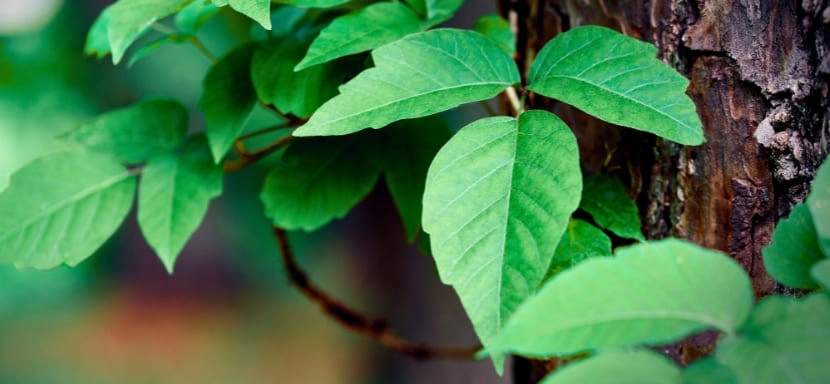
How to Identify Poisonous Plants
Exploring the great outdoors can be incredibly refreshing, offering a chance to reconnect with nature and unwind from daily stresses. However, it also comes with its fair share of risks. Chief among them? Poisonous plants. These hidden hazards can turn a peaceful...
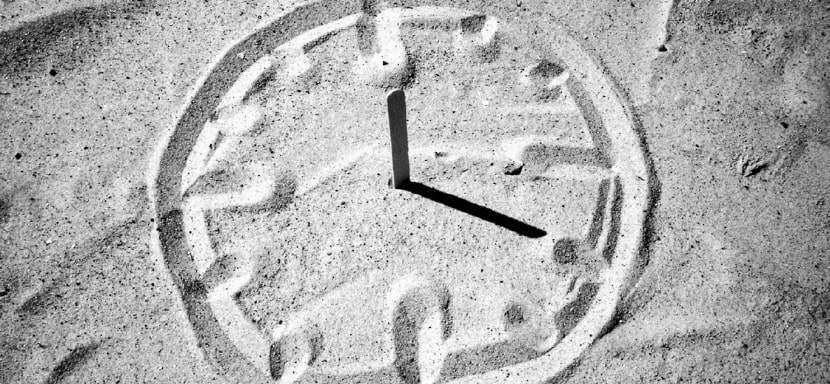
How to Use the Sun to Tell Time
Using the sun to tell time sounds like a Robinson Crusoe novel. Imagine being stranded on a desert island with no phone, clock, or sundial. You'd still have one incredibly reliable resource: the sun. It’s been doing its thing for billions of years, and by the looks of...
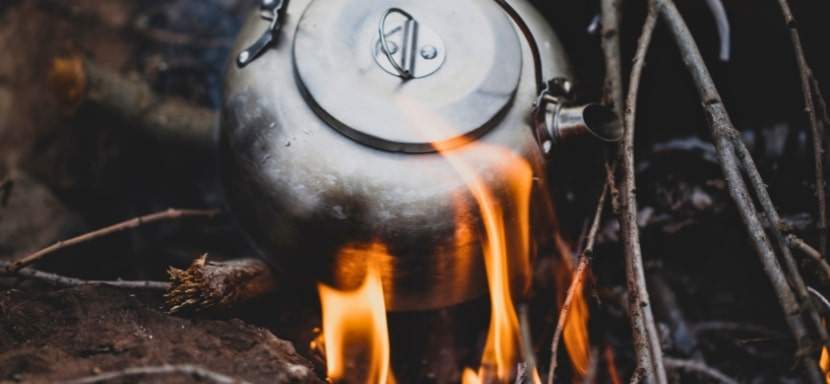
How to Purify Water Using Boiling
When you're miles away from civilization, lost in the wilderness, or don't trust what's coming out of your tap, the idea of pure, clean drinking water starts to sound like a mythical oasis. Maybe it's all those survival shows you've binged, but suddenly, you're eyeing...
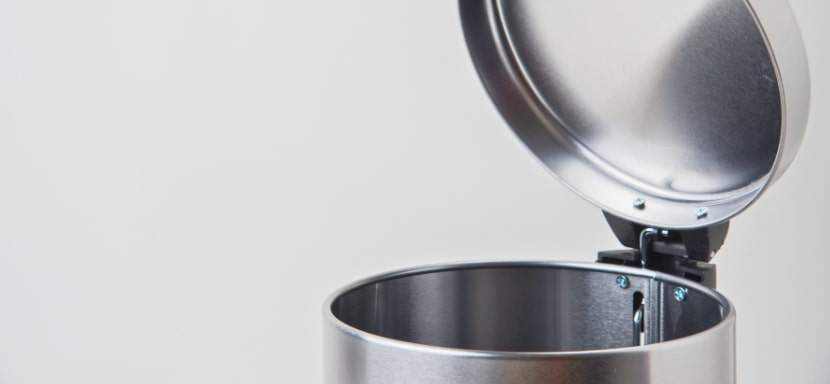
How to Build a Faraday Cage
Have you ever had one of those moments when your phone seems to be on its own personal field trip through Wi-Fi signals, Bluetooth, and all kinds of electromagnetic noise? Well, I have. The endless hum of invisible waves flying through the air makes you wonder—how can...
More Survival Scenarios

How to Survive a Layoff
When the Floor Falls Out: The Reality of a Layoff Layoffs feel personal—even when they're not. One day, you're responding to Slack messages and forwarding emails. Next, you're staring at your monitor as it logs you out... for good. Whether it's a restructuring, a...

How to Survive a Drug Test
The Cup, The Room, The Truth I never imagined I’d be so emotionally invested in a paper cup. But there I was, standing under the fluorescent hum of a strip-mall clinic, trying to recall the last time I ate a poppy seed bagel. That’s the thing about drug tests—they...

How to Survive an Interrogation
If you've ever been caught in the crosshairs of an overly enthusiastic mall cop or stared down by someone in a uniform with a clipboard and a glare, you’ve felt it — the chilly fingers of interrogation anxiety. And while most of us imagine interrogation scenes as...

How to Survive a Nightclub Shooting
Nightclubs pulse with life—lights flashing, music pounding, bodies packed tight on the dance floor. It’s a place to escape, feel the rhythm, and lose yourself in the crowd. But that same energy can turn deadly in seconds, transforming a night of fun into one of the...

How to Survive a Bachelor Party
A bachelor party is a delicate mix of celebration, chaos, and questionable decision-making, wrapped in the noble intention of sending the groom off into married life with a night he’ll (hopefully) remember. It’s a ritual as old as time—well, as old as men deciding...

How to Survive Your First Time at the Gym
Walking into a gym for the first time can feel like stepping into an alien world. The machines hum with purpose, the regulars move confidently, and you’re left standing there, clutching your water bottle, wondering whether you’re in the right place—or on the right...

How to Survive a Worldwide Communications Breakdown
Imagine waking up to silence. Your phone doesn’t buzz, your email won’t load, and even your local radio station crackles with static. A worldwide communications breakdown has hit. What next? For many, this doomsday scenario may sound like the opening lines of a...
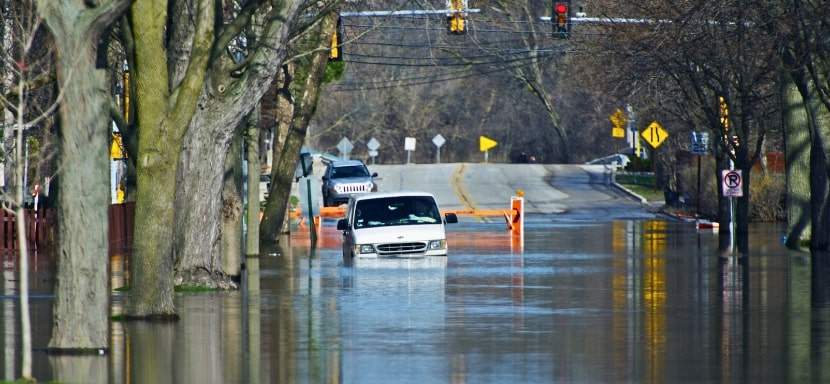
How to Survive a Flash Flood While Driving
Surviving a flash flood while driving requires quick thinking, calmness, and a solid plan to ensure your safety. Preparation can make all the difference between a close call and a catastrophe in emergencies like this. This guide provides practical advice to protect...

How to Build an Emergency Kit
Emergencies don’t knock politely at the door. They barge in, uninvited, like a distant relative with a penchant for drama, turning your world upside down without warning. Whether it’s a power outage, a natural disaster, or an unexpected evacuation, the key to staying...

How to Protect Yourself From Insects in the Wild
There’s nothing like being out in the wild—birdsong echoing through the trees, the fresh scent of earth, and a deep sense of peace that makes you think, “Ah, this is what life is about.” But then comes the buzzing. Mosquitoes, ticks, and flies swoop in like uninvited...
